Whoops! Swiss Federal Office caught manipulating Health Survey
Whoops! Swiss Federal Office caught manipulating Health Survey but Private Health Insurance data shows a staggering increase of population receiving cancer drugs!
"If you do the comparison, the one that wanted to be made in the health survey, calculate the increase from 2017 to 2022, then the value increased by 94%. So there were 94% more recipients of cancer drugs."
Professor Dr Konstantin Beck from University of Lucerne raises alarm in his recent presentation.
------------------------------------------------------
Hello everyone, my name is Konstantin Beck, I am a health economist at the University of Lucerne. We are asking the question, how healthy was Switzerland in the year 2022?
The reason for this is because in November '23, some publications, official releases appeared that have been partially retracted, which were very differing in their statements and the confusion on this point is somewhat significant at the moment. So, it's about sorting out these different statements. To the fact-checkers online, all statements made here are actually just those of the Federal Office of Public Health, and later of the Helsana insurance, the own calculations are kept within narrow limits. And if you are interested in this type of video, please subscribe and activate the bell so that you are informed when there is a new video as YouTube's algorithms sometimes do not make these videos easily findable. Let's start with the Health Surveys 2022.
This is conducted every five years by the Federal Office of Statistics. It receives high attention and is the basis for many scientific studies. And to this, the Federal Office states in its press release on November 3rd, when the health surveys were published, In the year 2022, 85%, so the vast majority of the Swiss population, felt healthy and 83% described themselves as happy. However, more than one-third of Swiss people live with a permanent health problem. However, these health problems cannot have been that great, because at least half of this third describes themselves as happy. The only negative that emerges here is the mental strain, which has increased compared to 2017 and especially in the younger age groups of 15-24-year-olds and there particularly among young women. Then there are a few details on smoking and alcohol consumption. And then, as I said, these are important results of the Swiss Health Surveys 2022 of the Federal Office for Statistics. So, even after the corona pandemic, the Swiss population is predominantly in good health according to their own assessment. This would actually say it all and solve the problem.
Now, the surprising thing is that at the same time, in the database of the Federal Office, a statistic with detailed information on the health survey could be found.
This was published under the abbreviation given here, and I believe I queried it on November 4th. And there you find answers to the question, have you ever had one of the following three diseases or health problems in your life? The questions were about heart attack, stroke, and cancer. And I will display it right away. What comes next has already been retracted by the Federal Office. But originally it stated that in 2017, approximately 33,000 reports of ever having a heart attack, nearly 28,000 a stroke, and about 117,000 cancer. And when you look at the figures for 2022, it increases to 170,000, 124,000, almost 461,000. So it rises by a factor of 4 to 5. It's a dramatic increase. However, I have corrected that. I calculated how much is due to age. We have immigration as well. Clearly, we have more cancer cases if more people live in Switzerland. But this gives corrections in the range of 2,000 to 9,000 cases.
So according to this statistic, we would have a third of a million more cancer cases in Switzerland, than one would expect based on age, sex, and immigration. And quite honestly, if this were the case, and I first believed these data too, they are from the Federal Office, then our cancer care and our cardiac infrastructure would probably be at their limits, if not collapsed. So at the latest by November 14th, at that time I realized this, you could no longer call up these numbers. The Federal Statistical Office erased the data for 2017 with the note that the health surveys of 2017 and 2022 are not comparable. No more information was provided. One had to inquire back. So if you have such a severe error, then it would perhaps be better or desirable that the error would be communicated better. Upon inquiry, it was then found out that in 2017 the question was, did you have any of the following diseases last year? And in 2022 the question was, have you ever had any of the following diseases or health problems in your life? Of course, that's a huge difference. Many people who didn't have a problem last year may have had the problem over the last few years. So understandable that then the second number will be larger than the first and also understandable that they are no longer comparable.
Not quite comprehensible, why you would change this question and thereby torpedo the comparability. Another argument, I won't go into it in so much detail now, is that the significance in many sub-evaluations was not given and they therefore wanted a larger sample, more 'yes' answers. Those are technically convincing arguments. But when you know that these are very sensitive questions because the vaccine critics expect that the negative impact of the vaccination could be shown and then just these data are first published to the institution and then retracted, it does not contribute to the trust in the Federal Office, unfortunately. Well, there remain open questions. Why was the obviously wrong comparison published? How did it even come about that the office, even though the difference is known, why did the office refrain from a detailed error communication, as I have already said? But why also does the press release of the Federal Office contrast so greatly with the development of chronic diseases? So there isn't even a mention that there was an increase here and what one doesn't know at all is, what is the actual situation concerning the increase or decrease of cancer diseases?
And fortunately, besides the office, there are also private providers. There's the drug reporter Helsana, which was published on November 30th and which specifies for each year the number of persons who, projected onto Switzerland, have taken cancer drugs that year. And we see, if we look at 2013 to 2016, it rises from 90,000 to nearly 107,000. Then it goes down again and then goes up a bit. So it fluctuates. In the pre-pandemic period, it fluctuates. Then it rises slightly in the year 2020 and then increases very sharply to 152,000 respectively 154,000 in the year 2022. If we present this graphically, we see this brown curve, fluctuations within two standard deviations from a growth area and then a massive increase in the year 2021, 2022 to over 150,000 cases. If you do the comparison, the one that wanted to be made in the health survey, calculate the increase from 2017 to 2022, then the value increased by 94%. So there were 94% more recipients of cancer drugs. In the year 2020, so in the pandemic year, when I have not had so many cancer drug recipients, we have plus 9%, but then we have plus 95% from the long-term trend and even plus 106%. So in short, we have a doubling of the number of cancer cases. This is not five times more as in this distorted statistic of the Federal Office, which has also been retracted, but it's not nothing. It's a very high value when we have twice as many people who are dependent on cancer drugs and cancer treatments.
Then immediately the question arises, is vaccination the cause? For the vaccination as the trigger for the cancer cases speaks to the timing pattern, that this spike begins precisely in the year of the vaccinations. If now, however, Corona were the trigger for cancer cases, why is the corresponding increase missing in the year 2020? Does it take that long until Corona has an effect? And also then one must say, yes, then but the vaccination was not able to prevent the severe courses that lead to cancer. So even then, the vaccination doesn't turn out convincingly. If a third factor were responsible, which cannot be excluded but then what could that be? What could explain this sudden and extremely significant increase?
I hope to provide a bit more clarity there. I thank Helsana for the fact that they did not alter their statistics in 2022 so that a time series emerges that can still be interpreted today and I thank you for your attention.
--------------------------------------
Please note that this will likely be "community noted" because (as of 7 Dec 2023), the existing "official" COVID guidelines appear to still be significantly influenced by major pharmaceutical entities, and regulatory bodies continue to be potentially compromised and official data appears to be massaged.
Source: https://www.aussie17.com/p/university-of-lucernes-prof-dr-konstantin
-
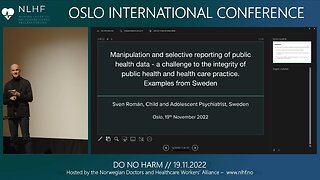 24:19
24:19
FreeSpeechChannel
1 year agoSweden - Dr. Sven Roman: Manipulation and selective reporting of public health data
1581 -
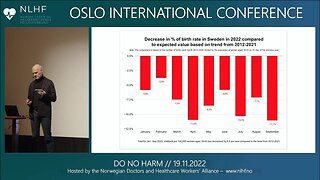 24:19
24:19
Norwegian Doctors & HCWs' Alliance
1 year agoDr. Sven Roman: Manipulation and selective reporting of public health data
77 -
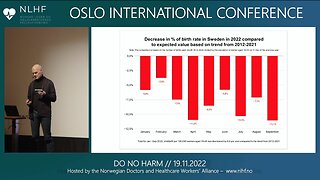 24:19
24:19
Norwegian Doctors & HCWs' Alliance
1 year agoDr. Sven Roman: Manipulation and selective reporting of public health data
873 -
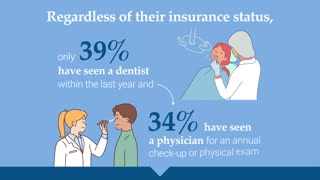 1:06
1:06
SWNS
7 months ago2 in 3 only see a doctor when something feels extremely wrong, survey finds
81 -
 29:13
29:13
Heroes And Zeros
8 months agoDr. Andy Bostom Recaps The Truths Of COVID Years And RI Dept Of Health Response Based On Unsubstantiated Regulations Using Vacant Data
3202 -
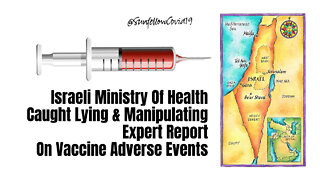 22:58
22:58
Sunfellow On COVID-19
1 year agoIsraeli Ministry Of Health Caught Lying & Manipulating Expert Report On Vaccine Adverse Events
195K18 -
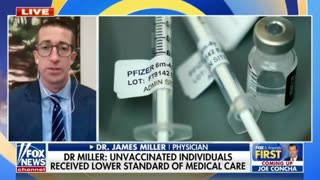 4:28
4:28
FlatEarther46
1 year agoDr. James Miller: Unvaccinated Individuals Received Lower Standard Of Medical Care
1671 -
 1:02:09
1:02:09
The Rubin Report
2 years agoExposing How Public Health Experts Failed Us & Lost Our Trust | Dr. Drew | POLITICS | Rubin Report
5.23K66 -
 21:58
21:58
Sunfellow On COVID-19
1 month agoDo Vaccines Make Us Healthier? (2024 Update Reviews The Data)
14.2K32 -
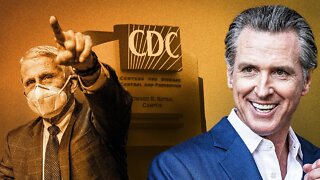 14:52
14:52
ReasonTV
1 year agoCalifornia Law Strips Licenses from 'Misinformation'-Spreading Doctors
3873